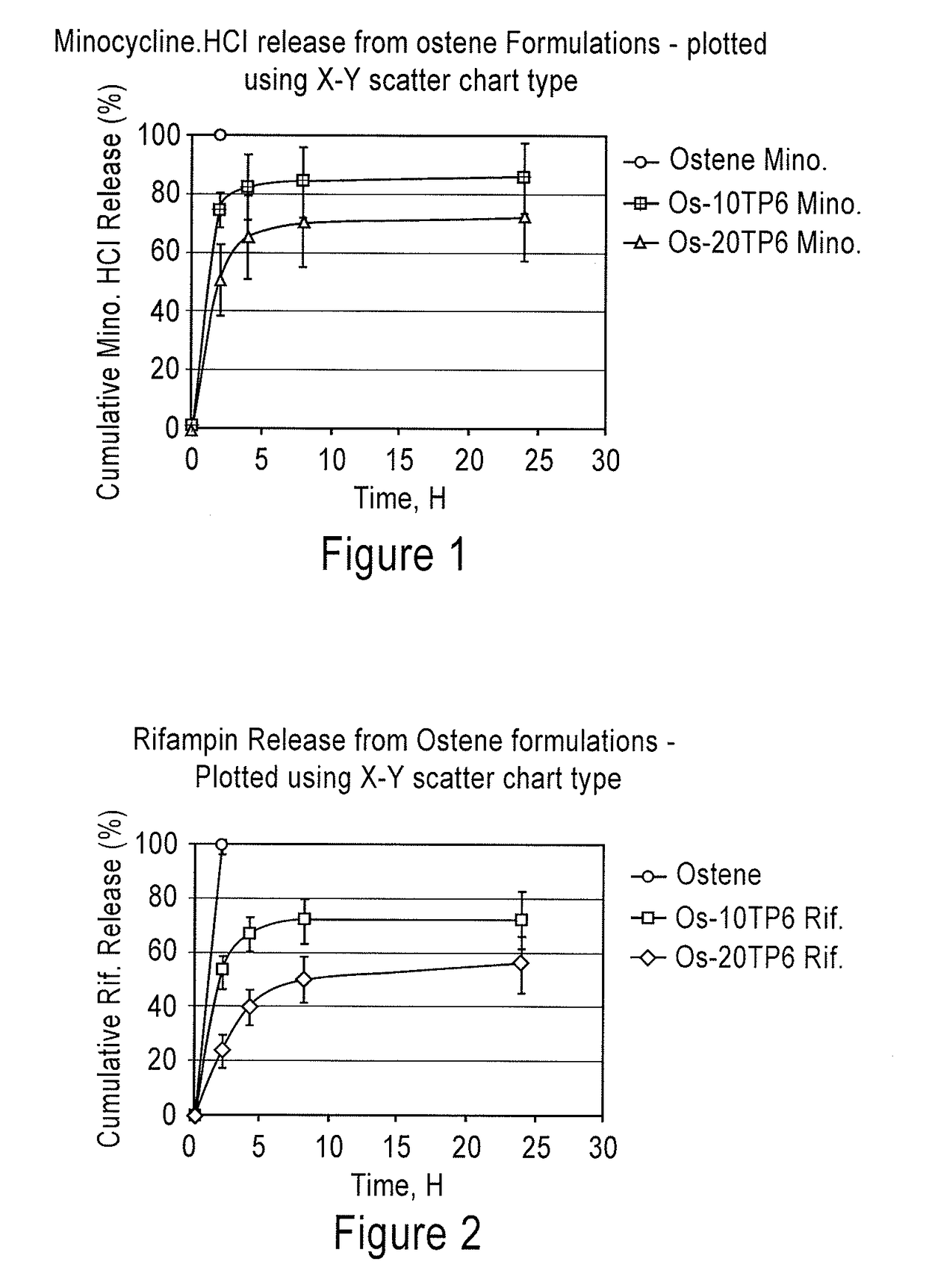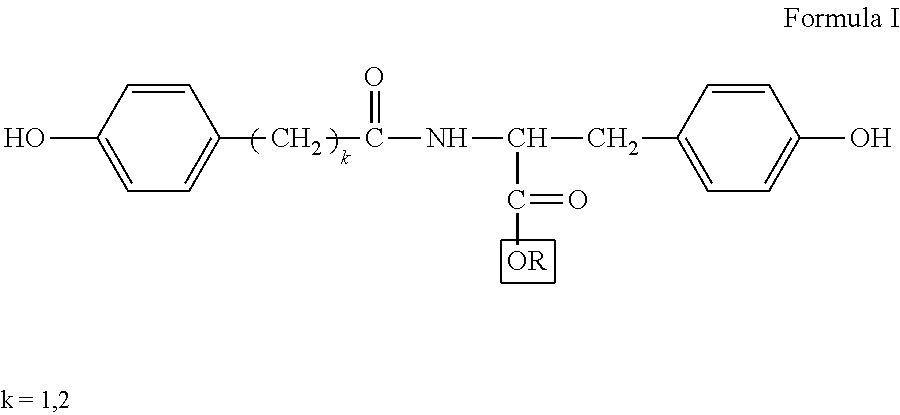Compositions and methods for preventing sternal wound infections
a technology for sternal wounds and compositions, applied in the direction of drug compositions, biocide, heterocyclic compound active ingredients, etc., can solve the problems of mediastinitis, a life-threatening condition with an extremely high mortality rate, and a drop in the rate of infection of the mediastinum, so as to reduce the infection leading to mediastinitis. , the effect of great reduction
- Summary
- Abstract
- Description
- Claims
- Application Information
AI Technical Summary
Benefits of technology
Problems solved by technology
Method used
Image
Examples
example 1
on of Polymer-Drug Powder
[0178]Tyrosine polyesteramide (P22-27.5) powder containing rifampin (10%) and minocycline (10%) drug was prepared by grinding polymer film. The polymer film containing rifampin and minocycline was prepared by solvent-cast method. Briefly, 8 g of tyrosine polyesteramide P22-27.5 was dissolved in 36 ml of THF. In a separate vial 1 g of rifampin and 1 g of minocycline was dissolved in 4 ml of methanol. The two solutions were mixed and poured into a TEFLON dish (10 cm diameter×1.9 cm depth). The solution was left at room temperature in a hood for 16-18 h to evaporate solvent. The dish was placed at 50° C. oven under vacuum for 24 h. The formulation bubbled up and formed a film. The film was crushed into the powder using a small mixer. The yield was 8.7 g Tyrosine polyesteramide polymer powder containing 10% each of rifampin and minocycline having MW range from 6 kDa to 70 000 kDa was prepared by this method. The MW weight of the polymer powder was assessed by GP...
example 2
on of PEG-Polymer Formulation
[0179]Various formulations were prepared in which P22-27.5-drug powder was combined with different ratios of PEG (MW 400) to yield various polymer-drug powder combinations. Table 2 below shows different combinations.
[0180]
TABLE 2P22-27.5-rifampin-minocycline formulations with PEG 400P22-27.5-drug% powder in#powder, gPEG 400, gPEG 40010.35.7 520.32.71030.31.71540.31.02356.2516.927%
example 3
Measurements
[0181]Viscosity of oil-like (lubricant type) formulation was measured on Brookfield viscometer (Model DV II+Pro, Brookfield Engineering Lab Inc., Middleboro, Mass.) equipped with temperature probe and 4 various spindles. The formulation #5 mentioned in Table 2 was taken into 20 ml scintillation vial and the viscosity was measured using spindle #63 at ambient conditions with a shear rate of 10 rpm. The viscosity of the formulation was 2230-2260 cp (centipoise).
PUM
 Login to View More
Login to View More Abstract
Description
Claims
Application Information
 Login to View More
Login to View More - R&D
- Intellectual Property
- Life Sciences
- Materials
- Tech Scout
- Unparalleled Data Quality
- Higher Quality Content
- 60% Fewer Hallucinations
Browse by: Latest US Patents, China's latest patents, Technical Efficacy Thesaurus, Application Domain, Technology Topic, Popular Technical Reports.
© 2025 PatSnap. All rights reserved.Legal|Privacy policy|Modern Slavery Act Transparency Statement|Sitemap|About US| Contact US: help@patsnap.com



